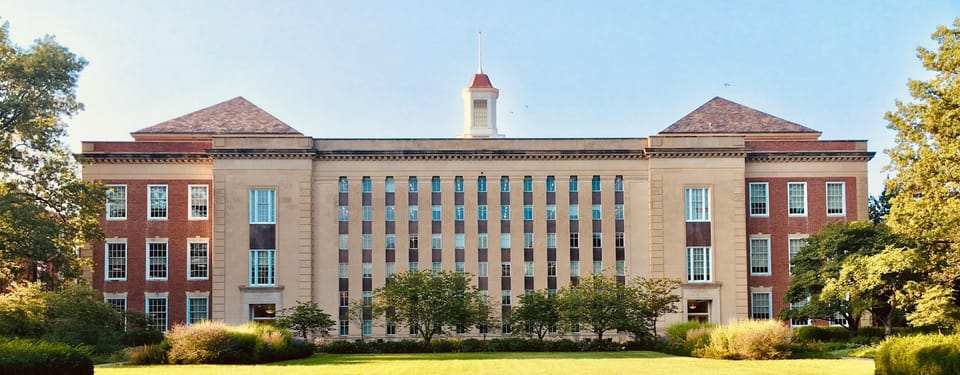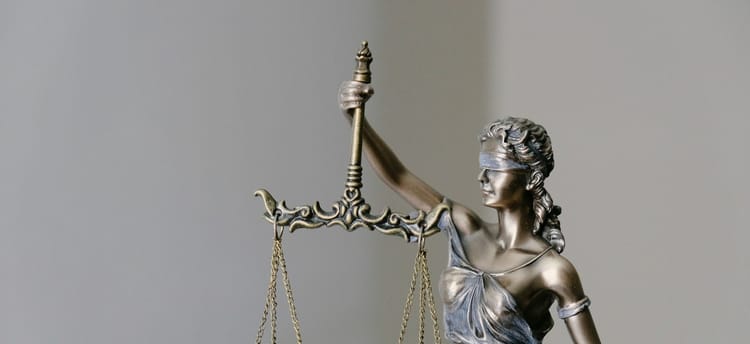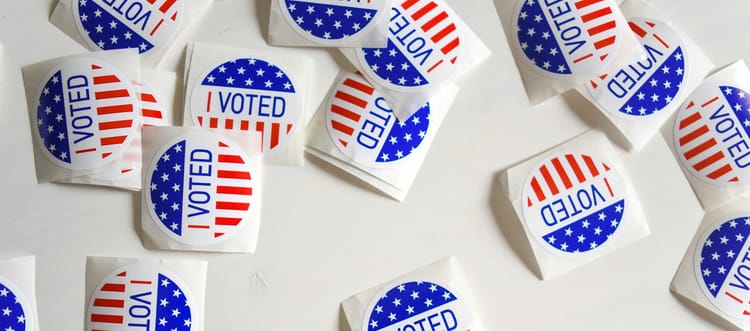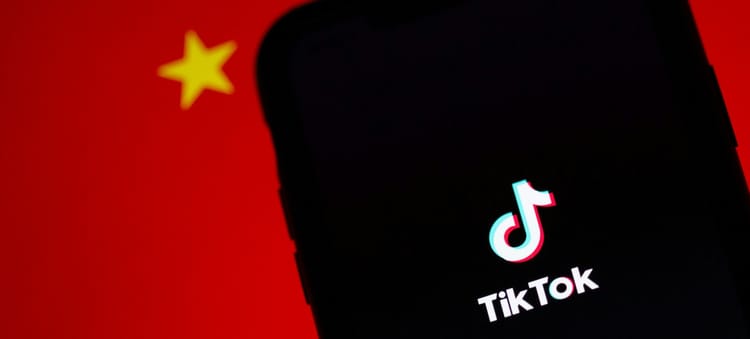The Spotlight: Affirmative Action Ban Reshapes College Admissions Nationwide and in Colorado

In June 2023 the U.S. Supreme Court struck down race-conscious affirmative action in college admissions, a decision that reshaped how universities across the United States and in Colorado review applicants. The Students for Fair Admissions v. Harvard and UNC ruling prohibits using race as a factor, pushing schools to adopt new race-neutral strategies to promote diversity. By 2025 the Trump administration expanded federal oversight, requiring colleges to submit detailed admissions data and limit any practice that could be seen as a proxy for race. From revised essay prompts and targeted financial aid to changes in legacy and early-decision policies, the end of affirmative action is driving a major shift in how students are evaluated for admission.
A Landmark Supreme Court Ruling Ends Race-Conscious Admissions
In a historic decision on June 29, 2023, the U.S. Supreme Court struck down race-conscious affirmative action in college admissions, ending a policy that had been in place for roughly 45 years. The Court ruled that admissions programs at Harvard University and the University of North Carolina, which considered an applicant’s race as one factor among many, violated the Equal Protection Clause and were unlawful. This ruling effectively prohibits universities from treating an applicant’s race or ethnicity as a distinct plus-factor in admissions, overturning decades of precedent that began with the Bakke decision in 1978. As University of Colorado professor Kevin Welner explains, the Court’s decision means colleges "cannot address a person’s race in and of itself as a factor in the admissions process" anymore. Doing so is now unconstitutional.
The immediate concern among educators and civil rights advocates was that eliminating affirmative action would reduce campus diversity. By using race as one element of holistic review, affirmative action aimed to boost enrollment of underrepresented groups. Now, experts warn the ban will “dramatically affect the makeup of students across campuses,” likely resulting in more White (and some Asian American) students and fewer Black and Latino students at selective colleges. The ruling does leave a narrow door open: Chief Justice John Roberts noted that students may still discuss how race has affected their lives in application essays, as long as it’s tied to personal qualities or achievements. However, admissions officers must walk a fine line to remain within the law. Any explicit consideration of race itself is off-limits, which marks a profound shift in the legal landscape for higher education.
Universities across the country responded to the verdict with public statements affirming their commitment to diversity. In Colorado, for example, the University of Colorado’s president and campus chancellors vowed to remain “unwavering” in fostering a diverse, inclusive, and equitable environment, emphasizing that they would continue to review “the whole student” in admissions. In practice, this means schools must find race-neutral ways to achieve diversity. Admissions offices immediately began scrutinizing their policies to ensure compliance. At CU Boulder – one of the few Colorado institutions that had considered race – officials moved to remove questions about race from applications and audit admissions practices for any unintended bias. The end of affirmative action set off a scramble in college admissions offices nationwide to adjust recruitment and selection strategies under the new legal reality.
Colleges Revamp Admissions Practices to Preserve Diversity
Facing the ban on race-conscious admissions, colleges large and small have been revamping their admissions criteria and outreach efforts to maintain student diversity through other means. One of the most widespread shifts has been an increased emphasis on personal essays and holistic reviews of each applicant’s life experience. Since the ruling explicitly permits students to share how race or other aspects of identity have shaped their character, many institutions are leaning into essays and interviews as tools to understand an applicant’s background. In fact, application forms in 2024–25 look noticeably different: numerous colleges introduced new essay prompts inviting discussions of personal challenges, upbringing, or experiences with diversity. For example, Sarah Lawrence College added an optional essay that directly references the Supreme Court case, asking students to describe “how [their] goals for a college education might be impacted, influenced, or affected by the court’s decision.” The intent, admissions officers say, is to give students an avenue to convey adversity or perspective linked to their identity – essentially, keeping the conversation about race and background alive, but on the student’s terms. As Sarah Lawrence’s dean of admission, Kevin McKenna, put it, the prompt signals “the importance of diversity to the university” while staying within the letter of the law.
Other colleges have taken a different tack: some streamlined their applications by dropping requirements like standardized test scores or recommendation letters that could pose barriers to under-resourced students. Notably, the University of Hawaiʻi at Mānoa decided to stop requiring personal essays and recommendation letters altogether, arguing these components “are ‘not materially valuable’ for our decision process” and can disadvantage students without access to coaching or savvy counselors. Meanwhile, standardized testing policies remain in flux. Many universities had already gone test-optional during the pandemic and continued to do so, partly to broaden their applicant pool. Public universities in Colorado, for instance, do not consider SAT or ACT scores in admissions by state policy, focusing instead on high school grades and coursework rigor. School officials argue this removes an obstacle for talented students who might not test well or who couldn’t afford extensive test prep. “Excellence is not defined by a test score,” one Colorado dean noted, saying the new landscape “will force us to define excellence even better” through more holistic measures.
However, not everyone in higher education agrees that test-optional policies boost diversity. Dartmouth College, after studying the outcomes of several test-optional admissions cycles, opted to reinstate its testing requirement in 2024, concluding that omitting scores did not significantly aid disadvantaged students. The data suggested that strong standardized test scores, when viewed in context, can actually help some high-achieving low-income students stand out in the process. This underscores the balancing act universities face: how to craft admissions criteria that promote equity without running afoul of the affirmative action ban – and without inadvertently hurting the very students they aim to help.
Beyond essays and testing, colleges are also revisiting longstanding admissions preferences and recruiting tactics. In the wake of the Court’s decision, several prominent schools moved to curtail legacy admissions, the practice of favoring children of alumni. Critics argue legacy preferences overwhelmingly benefit white and wealthy families and are hard to justify in an era without affirmative action. Wesleyan University, for example, announced in 2023 that it would end legacy admissions to promote fairness. Research has shown that at elite colleges like Harvard, around 70% of legacy and athletic admissions in recent years were White students, a stark imbalance. While most Ivy League institutions have been reluctant to drop legacy preferences (in part due to alumni donor pressures), the practice is under greater scrutiny as colleges look for any edge to preserve diversity. Likewise, some universities are rethinking early-decision admissions – which tend to advantage affluent students – as another lever they can adjust. The University of Michigan, for instance, recently began accepting fewer early-action applicants, recognizing that early pools were disproportionately white and well-resourced.
Many schools are doubling down on socioeconomic and geographic diversity initiatives as proxies for racial diversity. Giving extra weight to applicants from low-income families, first-generation college students, or those from high schools in underserved areas is becoming more common. “Race and class are intertwined,” as one Colorado College equity official observed, and focusing on socioeconomic background can indirectly improve racial diversity. Some of the nation’s top universities have rolled out major financial aid expansions to attract more low-income students in the post-affirmative action era. Notably, the University of North Carolina at Chapel Hill–one of the defendants in the Supreme Court case–announced it will offer free tuition and fees to in-state students from families earning under $80,000 a year (starting with the class entering in 2024). This move, coming just a week after the ruling, was widely seen as an effort to keep college accessible to more diverse communities. Similarly, the University of California system (which has been barred from affirmative action since the 1990s) invested over $500 million in the past decades on programs for low-income and first-generation students to broaden access. Those programs include outreach teams that groom talented students in disadvantaged high schools and automatic admission guarantees for top graduates of every high school in the state. In Colorado, private institutions like Colorado College have been “doubling down” on outreach to underrepresented groups. Colorado College’s president pledged to create new pipelines for diverse students, sending admissions officers to meet Black, Hispanic, and Indigenous students where they are – even forming partnerships with predominantly minority high schools in other states. These race-neutral recruitment strategies, such as targeting certain geographic areas or schools, are drawn straight from a “playbook for race-neutral admissions” now circulating among colleges.
Early Enrollment Trends: Diversity Changes Uncertain
As the first post-affirmative action admission cycles play out, the impact on student demographics has varied across institutions. Initial data from fall 2024 freshman classes showed no universal pattern in diversity outcomes. Some elite schools experienced noticeable declines in the share of underrepresented minorities. For example, MIT and Amherst College each saw a significant drop in the percentage of Black students in their incoming classes after race-based selection was eliminated. By contrast, other highly selective universities – including Yale, Princeton, and the University of Virginia – reported only minimal year-to-year changes (on the order of a fraction of a percentage point in minority enrollment). These mixed results suggest that how a college adapts its admissions strategy can make a difference, and that race-neutral measures may blunt the impact in some cases but not others. Admissions officers caution that it is still early, and many factors (from recruitment efforts to yield rates) influence enrollment trends.
History offers some sobering lessons. In states like California and Michigan, which outlawed affirmative action years earlier, campus diversity plunged immediately after those bans and has never fully rebounded at top public universities. In California, the first two years after the 1996 ban saw Black and Hispanic enrollment at UC Berkeley and UCLA fall by about half. Nearly 30 years later, those flagship campuses remain significantly less diverse than the state’s high school population: as of 2025, about 20% of undergraduates at UCLA and Berkeley are Hispanic (compared to 53% of California’s public high school graduates), and Black undergraduates are only 4% at Berkeley – a smaller share than in 1996. The University of Michigan tells a similar story. Despite extensive outreach and scholarship programs targeting low-income students, Black enrollment at UM’s flagship Ann Arbor campus dropped from 8% in 2006 (before Michigan’s ban) to roughly 4% in 2025. These figures underscore the challenge colleges face in trying to maintain racial diversity through indirect means alone. As one education leader in Colorado put it, without affirmative action, it will be a struggle for selective colleges “to maintain even the limited diversity that they have right now.” Every tool, from carefully crafted essay prompts to targeted recruitment and generous aid, is being deployed to try to close the gap. Whether these efforts can fully compensate for the loss of affirmative action remains an open question.
New Federal Actions Under the Trump Administration
The transition from the Biden administration to the Trump administration in January 2025 brought a dramatically different federal approach to diversity efforts in higher education. President Donald Trump and his allies have moved swiftly not only to enforce the Supreme Court’s ban, but also to clamp down on any practices they suspect might be circumventing it. In August 2025, Trump issued an executive order requiring colleges to submit detailed admissions data to prove they are not considering race in any form. The order directs the Department of Education to collect information on the race, GPA, and test scores of all applicants, admits, and enrollees – data that elite universities like Brown and Columbia have already been pressured to provide as part of recent federal settlement agreements. The Trump administration accuses some colleges of using application essays and “personal statements” as stealth conduits for racial preferences, or of dropping standardized tests in order to boost minority enrollment by other means. “The persistent lack of available data – paired with the rampant use of ‘diversity statements’ and other overt and hidden racial proxies – continues to raise concerns” about whether schools are obeying the ruling, Trump’s August memorandum declared. Under the new policy, if a college fails to report data or is found to be skirting the ban, it could face penalties including audits or the loss of federal student aid funding.
Even before that order, Trump-appointed officials at the Department of Education signaled an aggressive stance. In February 2025, the Department’s Office for Civil Rights sent a blunt “Dear Colleague” letter instructing colleges to “eradicate any vestiges” of diversity, equity, and inclusion (DEI) programs on campus – going so far as to label test-optional admissions policies as a prohibited DEI practice. The letter warned universities not to seek out “cues” about an applicant’s race in essays or use non-racial factors as a proxy for race, implying that even the permissive language in the Supreme Court’s ruling should be approached with extreme caution. Perhaps most strikingly, the Education Department asserted that the affirmative action ban extends beyond admissions to “all…aspects of student, academic, and campus life,” a broad interpretation that has sown confusion in academia. Colleges were given just 14 days to eliminate any program that could be construed as favoring a particular group, on threat of losing federal funds. This environment has chilled many traditional diversity initiatives. For instance, universities are now reviewing scholarship and support programs geared toward minority students to ensure they can justify them under race-neutral criteria.
On Capitol Hill, some lawmakers are pushing to cement these changes into law. Republicans in Congress introduced the Eliminate DEI in Colleges Act, a bill that would outright ban federal funding to any institution that “advocates, promotes, or supports” diversity, equity, and inclusion initiatives. While it’s unclear if such sweeping legislation will pass, it reflects a broader political momentum to further restrict how colleges pursue diversity. Higher education leaders have criticized these moves as politically motivated and at odds with universities’ academic freedom. They note that Chief Justice Roberts explicitly allowed consideration of a student’s discussion of race in the context of personal experience. Yet, federal officials are now warning colleges away from even voluntary disclosures by applicants. “Ultimately, will it mean anything? Probably not,” one American Council on Education expert said of the data-reporting mandate, suggesting it might be more about messaging than practical effect. Still, the message from Washington is unmistakable: any effort that appears to favor underrepresented groups now risks scrutiny or sanction.
Colorado Campuses Navigate New Constraints
In Colorado, where only a handful of colleges had been using race in admissions, the impact of the Supreme Court’s ban has been both practical and symbolic. CU Boulder, Colorado College, and the University of Denver were among the institutions that previously considered race as one factor. All have affirmed that they will comply with the new law while striving to keep their student bodies diverse. At CU Boulder – the state’s flagship public university – admissions officers say race was never a deciding factor, but it provided context in holistic review. Now, Boulder has eliminated the race question from its applications and is reviewing every scholarship and program for compliance. The university points out that it already emphasizes factors like a student’s personal background, leadership, and hardships overcome, and it will continue to do so in lieu of any race-conscious selection. Other public institutions in Colorado, such as Colorado State University and MSU Denver, note that they have long practiced race-neutral admissions. In fact, Colorado’s public colleges have not required SAT/ACT scores in recent years, and MSU Denver (an open-access campus with more than half its students being people of color) was unaffected by the ruling. These schools underscore that diversity can be achieved through broad access and support – MSU Denver automatically admits any local high school graduate over a certain GPA or age, for example, and maintains robust diversity without considering race explicitly.
For Colorado College, a private liberal arts college, losing affirmative action has prompted a concerted effort to build new pipelines for minority students. CC’s president, L. Song Richardson, responded to the Court’s decision by “doubling down” on creating a diverse and equitable campus, according to a message to the community. Colorado College has dispatched admissions recruiters to places like tribal communities and predominantly Black high schools out of state to encourage more applications from underrepresented students. The college is also looking at economic diversity as a key piece of the puzzle. With a majority of its students coming from high-income families, CC officials acknowledge that boosting financial aid will be critical to enable more low-income and first-generation students (often students of color) to attend. To stay within legal bounds, Colorado College has adjusted its application to invite students to discuss their “lived experiences” and the communities they come from, without directly asking for race. “What we are looking at is the narrative about that student,” explains CC’s dean of admission, emphasizing that any mention of race must be tied to personal story – exactly as the Supreme Court’s majority outlined.
As the landscape shifts, Colorado’s higher education leaders remain outspoken about the value of diversity. “We continue to believe educational communities…are made stronger and more equitable when universities cultivate intentional diversity,” University of Denver Chancellor Jeremy Haefner stated, even as DU reviewed its policies for compliance. That sentiment is echoed nationwide, but now must be pursued under heavy constraints. Guidance counselors are already working closely with high school seniors – in Colorado and beyond – to help them highlight their unique backgrounds and talents in their applications. The consensus among educators is that diversity remains an essential asset to campus life and learning, but achieving it will require creativity and commitment in this new era. --




